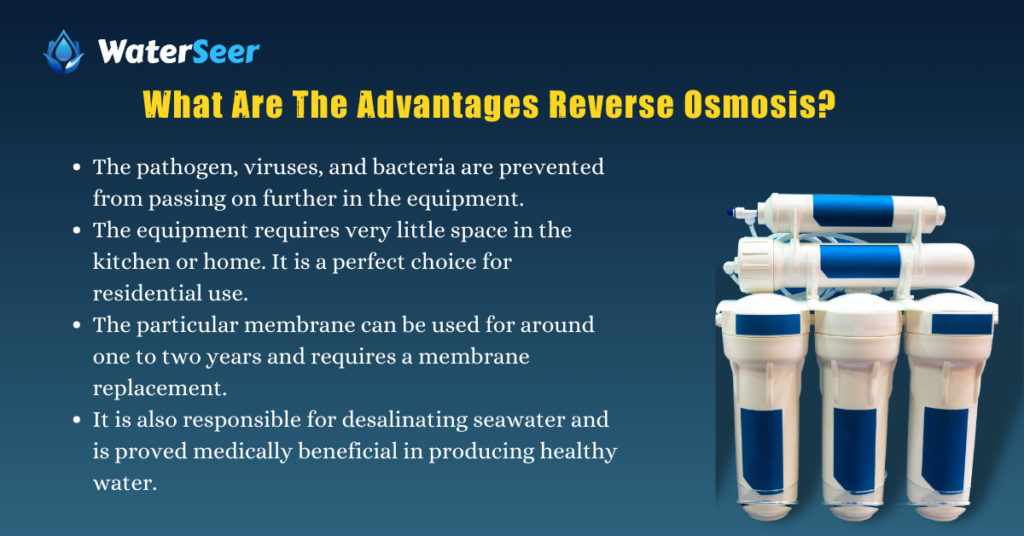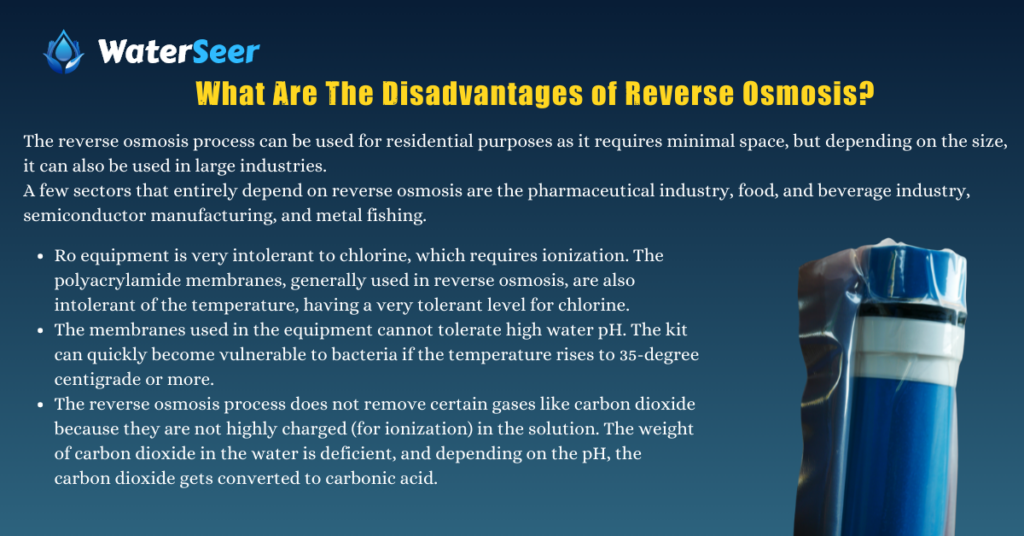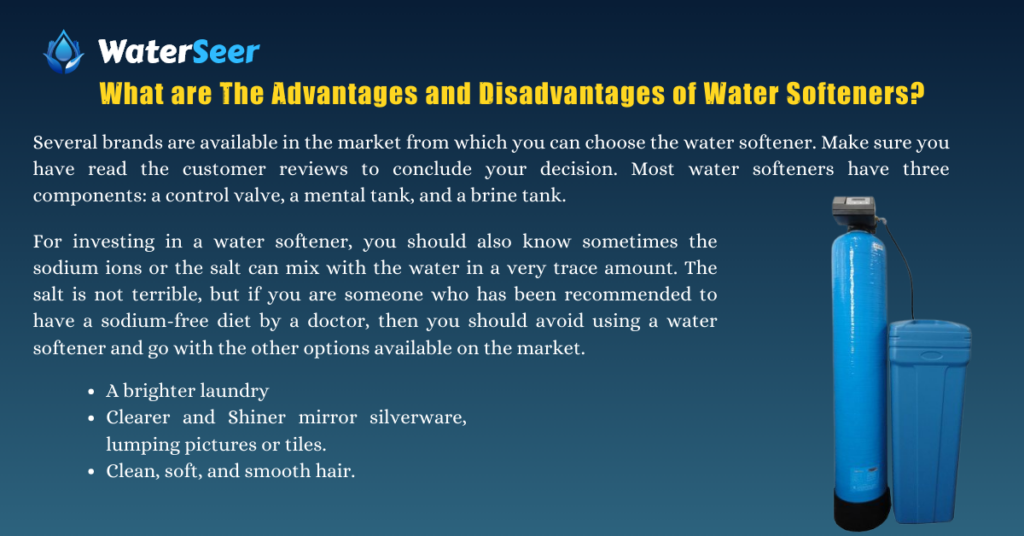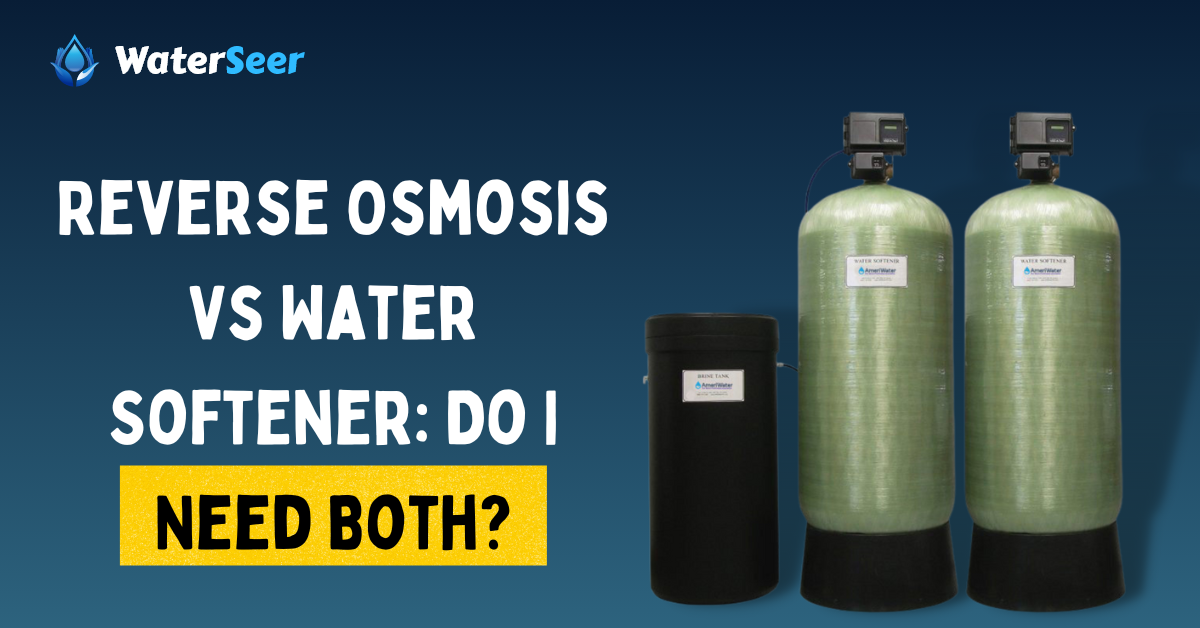We all need pure water to drink, and we all know that tap water or municipal water is not a healthier option!
To overcome this issue in our homes or industries, we all want to invest in equipment or a better option to filter the water to provide contaminant-free water. Today, some excellent water purification options are available on the market.
Every brand wants to influence the customer uniquely. But, research the product instead of directly getting affected or controlled by the individual.
This article discusses the two most popular filters, reverse osmosis vs water softeners.
We will also discuss their process, the disadvantages, the advantages, and the differences between them. We will provide detailed information to help you make a final and better decision for yourself!
What is Reverse Osmosis?
Reverse osmosis, commonly referred to as RO, is a water purification process. The main aim of this process is to remove the ions, large particles, and unwanted molecules from the water, making it much healthier to drink.
The method uses a partially permeable membrane that allows specific components to move ahead and prevent the passing of particular unwanted contaminants in the water. As a result, the pure water gets passed from the membrane.
What Are The Advantages and Disadvantages of Reverse Osmosis?
We have listed the advantages and disadvantages for you to understand what happens in Reverse Osmosis.
Advantages of Using Reverse Osmosis are Listed Down Below

- The pathogen, viruses, and bacteria are prevented from passing on further in the equipment.
- The equipment requires very little space in the kitchen or home. It is a perfect choice for residential use.
- The particular membrane can be used for around one to two years and requires a membrane replacement.
- It is also responsible for desalinating seawater and is proved medically beneficial in producing healthy water.
Disadvantages of Reverse Osmosis are Listed Down Below

- Ro equipment is very intolerant to chlorine, which requires ionization. The polyacrylamide membranes, generally used in reverse osmosis, are also intolerant of the temperature, having a very tolerant level for chlorine.
- The membranes used in the equipment cannot tolerate high water pH. The kit can quickly become vulnerable to bacteria if the temperature rises to 35-degree centigrade or more.
- The reverse osmosis process does not remove certain gases like carbon dioxide because they are not highly charged (for ionization) in the solution. The weight of carbon dioxide in the water is deficient, and depending on the pH, the carbon dioxide gets converted to carbonic acid.
The reverse osmosis process can be used for residential purposes as it requires minimal space, but depending on the size, it can also be used in large industries.
A few sectors that entirely depend on reverse osmosis are the pharmaceutical industry, food, and beverage industry, semiconductor manufacturing, and metal fishing.
What is Water Softener?
According to the survey, around 85% of the households in the US have hard water. Hard water means that the water contains a very high amount of light magnesium and calcium minerals.
These dissolved minerals are not very toxic, but they are also not healthy to drink. The taste, as well as the smell of these minerals, is not convenient for humans. Levels can increase at such a level that it can destroy the life of living organisms.
If you want to find out the hardness of the water, you need to notice the hard water by seeing or witnessing the cloudy water spots on the sinks, shower enclosures, bath taps, and dishes.
Even if you wash your clothes with hard water, you can see a grey colour in your clothes, and the coloured clothes will look faded and dull. To protect you from all this, water softener plays a considerable role.
A whole house filtration system or water softener is responsible for removing the hardness through a process known as ion exchange. If you live in a very high-temperature area, the chances of solidifying calcium and magnesium ions in the water increase.
Using whole house filtration systems or water softeners becomes much more critical.
The ion exchange process consists of a column with raisin beads. They are made up of polystyrene and sodium ions. These raisins grab mineral ions and pass them on to the pure water. We shall look into introductory chemistry.
The sodium ions are negatively charged, while the calcium and magnesium are positively charged. So, we all know that the opposite charges attract each other charges repel each other.
This process works on the same principle. The sodium will bind with the calcium and magnesium, due to which these mineral ions will stick with the beads or resins. Thus, filtering the water in a very efficient way.
Also Read:- How to Install a Water Softener Yourself? (Step-by-Step Guide
What Are The Advantages And Disadvantages of Water Softeners?

Several brands are available in the market from which you can choose the water softener. Make sure you have read the customer reviews to conclude your decision. Most water softeners have three components: a control valve, a mental tank, and a brine tank.
For investing in a water softener, you should also know sometimes the sodium ions or the salt can mix with the water in a very trace amount. The salt is not terrible, but if you are someone who has been recommended to have a sodium-free diet by a doctor, then you should avoid using a water softener and go with the other options available on the market.
The advantages of a water softener are listed down below:
- A brighter laundry
- Clearer and Shiner mirror silverware, lumping pictures or tiles.
- Clean, soft, and smooth hair.
Which System Should You Buy: Reverse Osmosis Vs Water Softener?
The above two sections discuss the advantages and disadvantages of reverse osmosis and water softeners. It has already provided very detailed information about what the process is and what the cost will be.
The preference of the water system should accord with your needs and requirements; for example, if you are suffering from an issue of hard water and want to remove the minerals from the water, then you should go for the water softener.
But suppose your problem is the ions and the contaminated water. In that case, you should automatically go for the reverse osmosis system. So, it is essential to clarify the exact problem.
Shall You Combine These Systems?
Most of you might have thought, why can you not use both systems simultaneously to solve most problems? The answer to this question is, of course, YES.
Combing both processes has several benefits, as the reverse osmosis system life expectancy can be increased because the water will not have any hardness after it has passed on from the water softener.
Thus, the maintenance cost of the Reverse osmosis system will automatically go down.
In the same way, you will not have to pay extra money for continuously changing pipes and the other equipment in your home, which can get easily defected because of hard water.
This scenario will also have some disadvantages; for example, you cannot install the reverse osmosis system in some faucets like showers, kitchen taps, bathroom faucets, etc.
To overcome this issue, we should always install the water softener in the central water system so that your water is already purified before it reaches the reverse osmosis system in your kitchen. This way, you will solve both the problem and the showers, and another process of your houses will receive the soft water.
The drinking water will be purified due to the installation of a reverse osmosis system in that area.
A Pro Tip
Before installing anything in the house, make sure you have determined what kind of water treatment is suitable according to your residential area. This will help you better understand to what extent you need to spend the money and what type of water filter you need to purify them.
Conclusion
Water is an essential component of our life. No Living Organism can live without water.
More than half of our body weight is because of water, and that’s how we can assume the importance of this component. But from the past few decades, purifying the water before consuming it has become an essential part of our life.
This article discusses the two most common filtration processes, reverse osmosis and water softener. Using any equipment depends on a personal choice as it varies from person to person depending on their area. We hope this article has helped you clear your mind and make your final decision.
If you have made up your decision, check out the different options of other brands available for the same equipment in the market, and don’t forget to read the customer reviews to make a better choice!
| Check Out These Article |
|---|
| Soda Water vs. Club Soda |
| Soft Water vs. Hard Water |
| Soda Water vs. Club Soda |
| Mineral Water Vs Sparkling Water |

